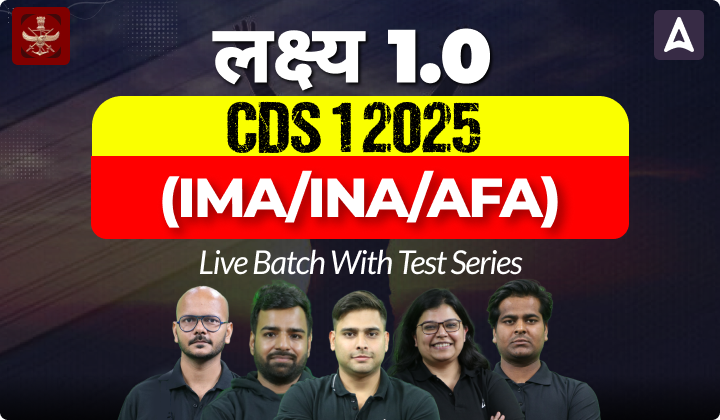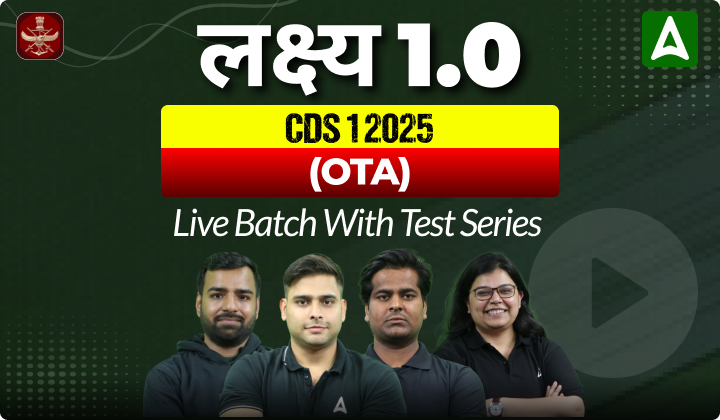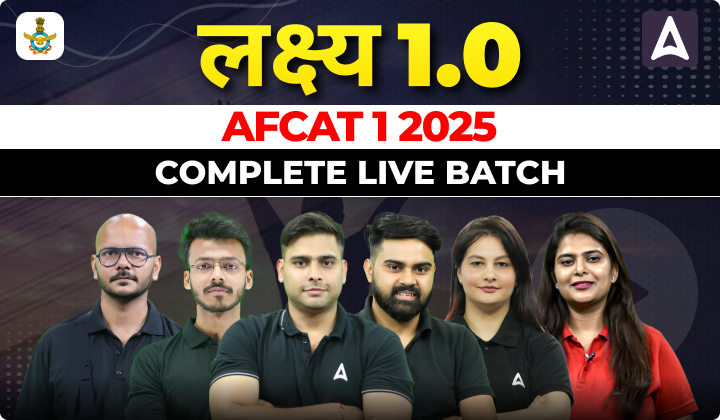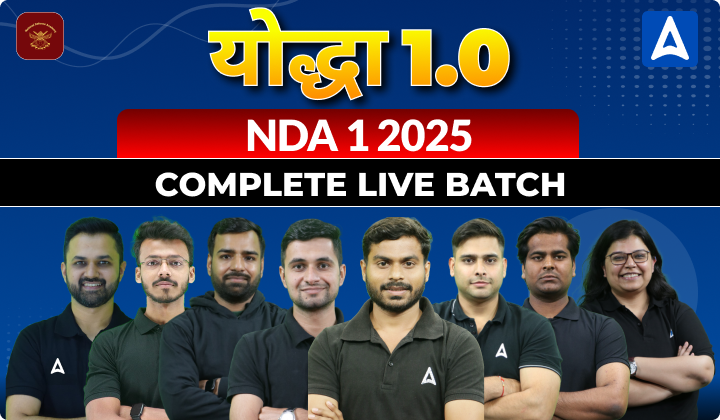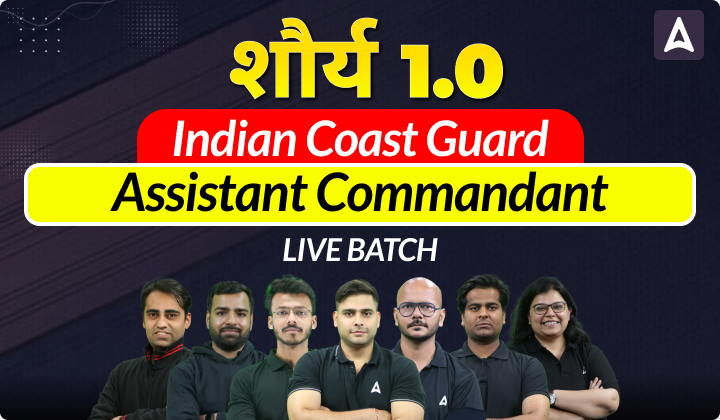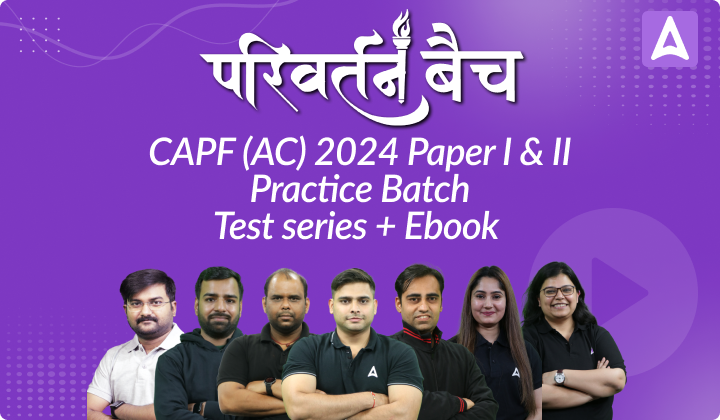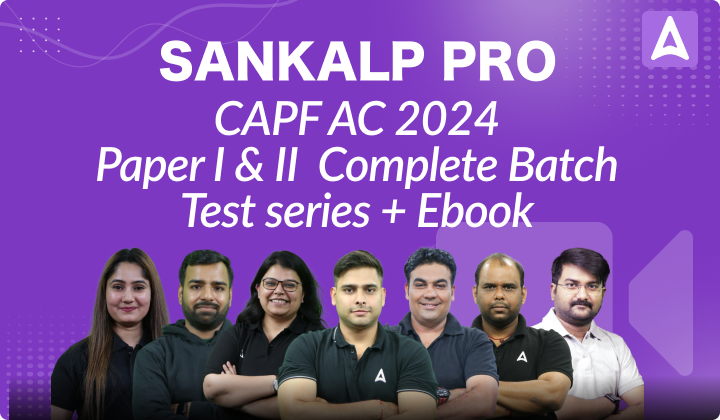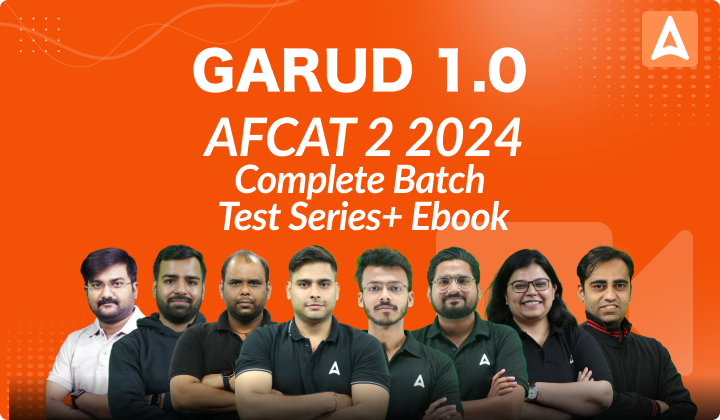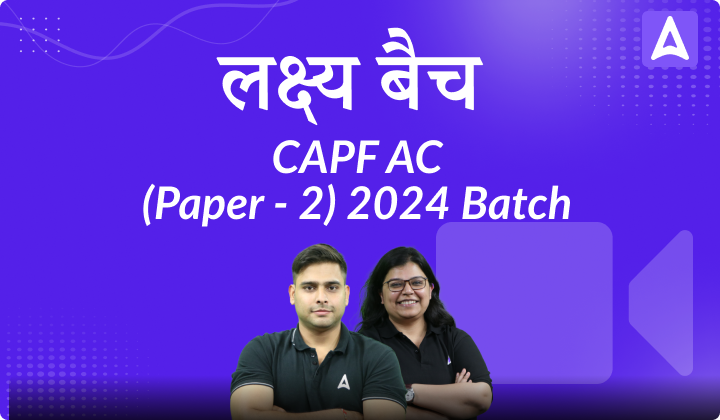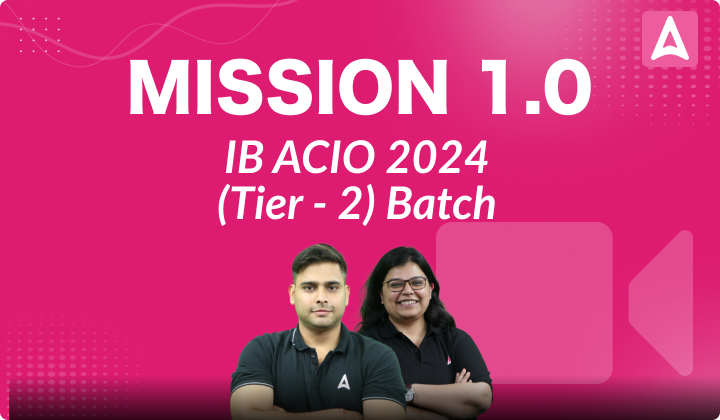Are you preparing for the Agniveer Air exam and want to boost your general knowledge skills? Look no further! We have compiled a comprehensive list of top 10 GK questions specially designed to help you excel in your preparation. Each question has been carefully selected to reflect the focus and requirements of the exam, ensuring that you are well-equipped for the challenge ahead. This resource is perfect for enhancing your understanding and retention of key concepts. Dive into Agniveer Vayu GK Questions, test your knowledge, and take the first step towards achieving your Agniveer Air goals!
Agniveer Vayu GK Questions
General knowledge plays a crucial role in the Agniveer Air exam, often posing challenges for many candidates. This article provides a thoughtfully chosen selection of essential GK questions to enhance your knowledge and boost your exam preparation. Each question has been chosen to reflect the key topics covered in the syllabus, so that you can focus on the most relevant material. Engaging with this resource will not only improve your GK skills but will also boost your confidence, leading you on the path to success in the Agniveer Air exam.
Important Topics of GK for Agniveer Vayu
| Topic | Explanation |
| National and International Current Affairs | Awareness of recent events and developments in India and globally, vital for understanding political and economic issues. |
| General Awareness | Broad knowledge about various subjects, including history, culture, and significant events. |
| Indian States and Capitals | Knowledge of India’s states and their capitals, crucial for understanding geography and governance. |
| Countries and Currencies | Knowledge of different nations and their currencies, important for understanding global economics and relations. |
| World Geography | Understanding geographical features, countries, and landmarks globally, critical for contextualizing events and cultures. |
| Awards and Honors | Awareness of notable awards in various fields, highlighting achievements and contributions to society. |
| Important Days | Recognition of significant national and international observances, promoting cultural awareness and historical understanding. |
| Sports Terminology | Familiarity with terms and concepts specific to various sports, essential for comprehending sports-related discussions. |
| Inventions & Discoveries | Knowledge of significant inventions and discoveries that have shaped civilization, fostering appreciation for innovation. |
| Binary Logic | Understanding the principles of binary systems, foundational in computer science and digital technology. |
| Classification | The ability to categorize information or objects based on shared characteristics, aiding in organization and problem-solving. |
| Analogies | Recognizing relationships between pairs of words or concepts, enhancing critical thinking and reasoning skills. |
| Solar System | Familiarity with celestial bodies and their relationships, essential for basic astronomical concepts. |
Top GK Questions for Agniveer Vayu
To excel in the Agniveer Air exam, it is important to have a grip on various topics, and this guide presents 10 important GK questions with detailed explanations to deepen your understanding and boost your preparation.
Q1. Which of the following cricket players wrote the autobiography ‘Playing It My Way’?
(a) Yuvraj Singh
(b) Sourav Ganguly
(c) Sachin Tendulkar
(d) Kiran More
S1.Ans(c)
Sol. The correct answer is (c) Sachin Tendulkar.
- Playing It My Way is the autobiography of Former Indian cricketer Sachin Tendulkar.
- It was co-authored by Boria Majumdar, an Indian sports journalist along with Sachin.
- The autobiography was published on 5 November 2014.
- Sachin Tendulkar was born on 24 April 1973 and started his cricket journey at the age of 16.
- He was awarded Bharat Ratna Award on the day of his retirement.
Facts to remember:
- “A Century Is Not Enough” is an autobiography by Sourav Ganguly.
- Yuvraj Singh authored “The Test of My Life”.
- The biography of Rahul Dravid, titled “The Nice Guy Who Finished First”, was written by Devendra Prabhudesai.
- Kapil Dev wrote “Cricket – My Style” and “Straight from My Heart: An Autobiography”.
- Ravi Shastri is the author of “Stargazing: The Players in My Life”.
Q2. Who authored the book ‘Poverty and Un-British Rule in India’ in 1901, which was highly critical of the economic impact of British Rule?
(a) Pherozeshah Mehta
(b) Dadabhai Naoroji
(c) WC Bonnerji
(d) Badruddin Tyabji
S2.Ans(b)
Sol. The correct answer is (b) Dadabhai Naoroji.
- Dadabhai Naoroji authored the influential book Poverty and Un-British Rule in India in 1901, where he criticized the economic impact of British rule on India.
- Known as the “Grand Old Man of India,” Naoroji was a key figure in the Indian independence movement and a founder of the Indian National Congress (INC).
- In 1855, he became a Professor of Mathematics and Natural Philosophy at Mumbai’s Elphinstone College.
- He was the first Indian to hold such a position.
- His political career began as the Dewan of the Maharaja of Baroda in 1874.
- He formed the London India Society in 1865 to put forth views on Indian political, social, and literary subjects.
- He was also the first Indian to be elected to the British Parliament.
Facts to remember:
- Womesh Chunder Bonnerjee was a prominent lawyer and political leader.
- He was the first president of the Indian National Congress when it was founded in 1885.
- Badruddin Tyabji was an Indian lawyer and political activist.
- He was the third president of the Indian National Congress and the first Muslim to hold this position.
Q3. Where was All Indian Muslim League formed in 1906?
(a) Agra
(b) Dhaka
(c) Lahore
(d) Delhi
S3.Ans(b)
Sol. The correct answer is (b) Dhaka.
- The All India Muslim League was established on December 30, 1906, at a conference led by Nawab Salimullah Khan of Dhaka.
- It was founded in Dacca, British India (now Dhaka, Bangladesh).
- The constitution of the League was drafted in 1906 in Karachi, and its first session was held in 1907 in Karachi.
- Aga Khan was the First President.
- A resolution to form the All India Muslim League was passed by Nawab Salimullah Khan and was seconded by Hakim Ajmal Khan, Maulana Muhammad Ali, and Moulana Zafar Ali.
Facts to remember:
- The resolution was passed by the All India Educational Conference on 30th December 1906.
- Muslim League opposed the Swadeshi Movement of 1905.
- 1916 Lucknow Pact: The League and the Congress reached an agreement for greater self-governance and Muslim representation.
- Lahore Resolution (1940): The League formally adopted the demand for a separate Muslim state, which later became Pakistan.
Q4. What is the primary cause for the highest precipitation in India?
(a) West Garo Hills
(b) South-West Monsoon
(c) North-East Monsoon
(d) East Khasi Hills
S4.Ans(b)
Sol. The correct answer is (b) South-West Monsoon.
- During the South-West Monsoon season, which typically occurs from June to September, India receives the majority of its annual rainfall.
- This monsoon brings moisture-laden winds from the Arabian Sea and the Indian Ocean, which results in widespread and heavy rainfall across the country, especially over the western and central regions.
- West Garo Hills is located in the state of Meghalaya, the West Garo Hills receive heavy rainfall due to their proximity to the Bay of Bengal and the influence of the South-West Monsoon.
- The region is part of the Meghalaya Plateau, known for its high rainfall.
- North-East Monsoon also known as the winter monsoon or retreating monsoon, the North-East Monsoon occurs from October to December.
- It primarily affects the eastern and southern coast of India, bringing rainfall to states like Tamil Nadu, Andhra Pradesh, and parts of Karnataka and Kerala.
Facts to remember:
- Similar to the West Garo Hills, the East Khasi Hills in Meghalaya receive substantial rainfall due to their location in the Meghalaya Plateau and the influence of the South-West Monsoon.
- Cherrapunji and Mawsynram in this region are known as some of the wettest places on Earth due to their extremely high annual rainfall
- Mawsynram is a town in the East Khasi Hills district of Meghalaya state that receives the maximum rainfall in the world.
- Garo Hills, Khasi Hills, Jaintia Hills receive heavy rainfall (the world’s largest) because of the funnel shape hills.
Q5. Which of the following is true about disposable income in relation to personal income?
(a) Disposable income is equal to personal income.
(b) Disposable income is always less than personal income.
(c) Disposable income is always greater than personal income.
(d) Disposable income can be greater or less than personal income, depending on taxes and deductions.
S5.Ans(b)
Sol. The correct answer is (b) Disposable income is always less than personal income.
- Disposable income is the amount of money that individuals or households have available to spend and save after income taxes have been deducted.
- It is calculated as : Disposable Income=Personal Income−Income Taxes.
- Disposable income is always less than personal income because it accounts for the subtraction of taxes and other mandatory deductions from the total personal income.
- It represents the money available for spending on goods and services, saving, and investing.
Facts to remember:
- Personal income is the total income received by individuals from all sources, including wages, salaries, dividends, interest, rent, and other forms of earnings, before any taxes or deductions.
- It includes earnings from employment, investment income, and government transfers.
- Gross income refers to the total income earned by an individual or household before any taxes, deductions, or expenses.
- It includes wages, salaries, bonuses, rental income, dividends, and other income sources.
Q6. Which of the following best describes the process of calorimetry?
(a) Measuring the amount of compressive strength
(b) Measuring the amount of force
(c) Measuring the amount of electricity
(d) Measuring the amount of heat energy transferred
S6.Ans(d)
Sol. The correct answer is (d) Measuring the amount of heat energy transferred.
- Calorimetry is the process of measuring the amount of heat energy transferred to or from a substance.
- This measurement is typically conducted using a device called a calorimeter.
- Calorimetry is commonly used in various scientific fields such as chemistry, biology, and physics to determine the heat of chemical reactions, physical changes, or heat capacity of materials.
- Calorimeter consists of a metallic vessel made of materials that are good conductors of electricity like copper and aluminum.
- It is used to measure the thermal changes of a body.
Q7. Which Article of the Constitution of India provides early childhood care and education for all children until they complete the age of six years?
(a) Article 38
(b) Article 39
(c) Article 45
(d) Article 40
S7.Ans(c)
Sol. The correct answer is (c) Article 45.
- Article 45 of the Constitution of India provides for early childhood care and education for all children until they complete the age of six years.
- It is part of the Directive Principles of State Policy, which are guidelines for the framing of laws by the government.
- However, this mandate was moved to Article 21A in 2002, through the 86th Constitutional Amendment Act, which made free and compulsory education a fundamental right.
- Articles 36-51 under Part-IV of the Indian Constitution deal with Directive Principles of State Policy (DPSP).
- They are borrowed from the Constitution of Ireland, which had copied it from the Spanish Constitution.
Facts to remember:
- Article 38: This article directs the state to promote the welfare of the people by securing and protecting a social order in which justice, social, economic, and political, shall inform all the institutions of the national life.
- Article 39: This article directs the state to ensure that citizens have an adequate means of livelihood, that resources are distributed to subserve the common good, and that there is equal pay for equal work for both men and women, among other provisions.
- Article 40: The State shall take steps to organize village panchayats as units of Self Government.
Q8. Which nutritional disorder is caused by deficiency of vitamin B1 and results in problems of peripheral nerves and wasting?
(a) Xerophthalmia
(b) Pernicious anaemia
(c) Beriberi
(d) Rickets
S8.Ans(c)
Sol. The correct answer is (c) Beriberi.
- Beriberi is caused by a deficiency of vitamin B1 (thiamine).
- It primarily affects the nervous system and cardiovascular system.
- Symptoms include peripheral neuropathy (tingling, numbness, and pain in the hands and feet), muscle weakness and wasting, fatigue, and in severe cases, heart failure.
- There are two main types:
- Wet beriberi: Characterized by cardiovascular symptoms such as swelling (edema), increased heart rate, and heart failure.
- Dry beriberi: Primarily affects the nervous system, causing muscle wasting and difficulty walking.
Facts to remember:
- Xerophthalmia is caused by the deficiency of vitamin A.
- Symptoms: Dryness of the conjunctiva and cornea, night blindness, and in severe cases, complete blindness.
- Pernicious Anaemia is caused by the deficiency of vitamin B12.
- Symptoms: Fatigue, weakness, neurological problems, and megaloblastic anemia.
Q9. Who was the music director of the famous song “Aye Mere Watan Ke Logon” sung by Lata Mangeshkar ?
(a) Kishore Kumar
(b) Rajesh Roshan
(c) C Ramchandra
(d) Anand Raaj Anand
S9.Ans(c)
Sol. The correct answer is (c) C Ramchandra.
- C Ramchandra was the music director of the famous song “Aye Mere Watan Ke Logon” sung by Lata Mangeshkar.
- “Aye Mere Watan Ke Logon” is a poignant patriotic song in Hindi, sung by Lata Mangeshkar.
- It was first performed live in 1963 at the National Stadium in New Delhi, in the presence of then Prime Minister Jawaharlal Nehru.
- Lata Mangeshkar is one of the most renowned playback singers in India and is often referred to as the “Nightingale of India.”
- She was born on September 28, 1929, in Indore, Madhya Pradesh.
- Lata Mangeshkar’s career spanned several decades, during which she recorded songs in various Indian languages, but primarily in Hindi.
- Lata Mangeshkar has received numerous awards and honors, including Bharat Ratna, India’s highest civilian award, in 2001.
Q10. In India, wild asses and camels are found in which type of forests?
(a) Tropical evergreen forests
(b) Mountain forests
(c) Thorn forests and scrubs
(d) Mangrove forests
S10.Ans(c)
Sol. The correct answer is (c) Thorn forests and scrubs.
- Wild asses and camels in India are typically found in thorn forests and scrubs. These types of forests are characterized by sparse vegetation, thorny bushes, and adapted plants that can survive in arid and semi-arid conditions, making them suitable habitats for these animals.
- Rats, mice, rabbits, fox, wolf, tiger, lion, wild ass, horses, and camels are found in thorn and scrubs forests.
- This sort of vegetation is discovered mostly in those territories where the normal yearly precipitation is under 75 cm with the long dry season.
- Found in arid and semi-arid regions of India, such as Rajasthan, Gujarat, parts of Maharashtra, and Karnataka.
Facts to remember:
- Tropical Evergreen Forests are found in regions with high rainfall and constant warm temperatures, such as parts of the Western Ghats, Northeast India, and the Andaman and Nicobar Islands.
- Characteristics: Dense, lush green forests with multiple layers of vegetation.
- They have a high biodiversity with a variety of plant and animal species adapted to the wet and humid environment.
Agniveer Vayu GK Questions PDF
If you’re interested in accessing all these questions in PDF format, you can download the Agniveer Vayu GK Questions PDF through the link provided below. Candidates can easily obtain it by clicking the link.

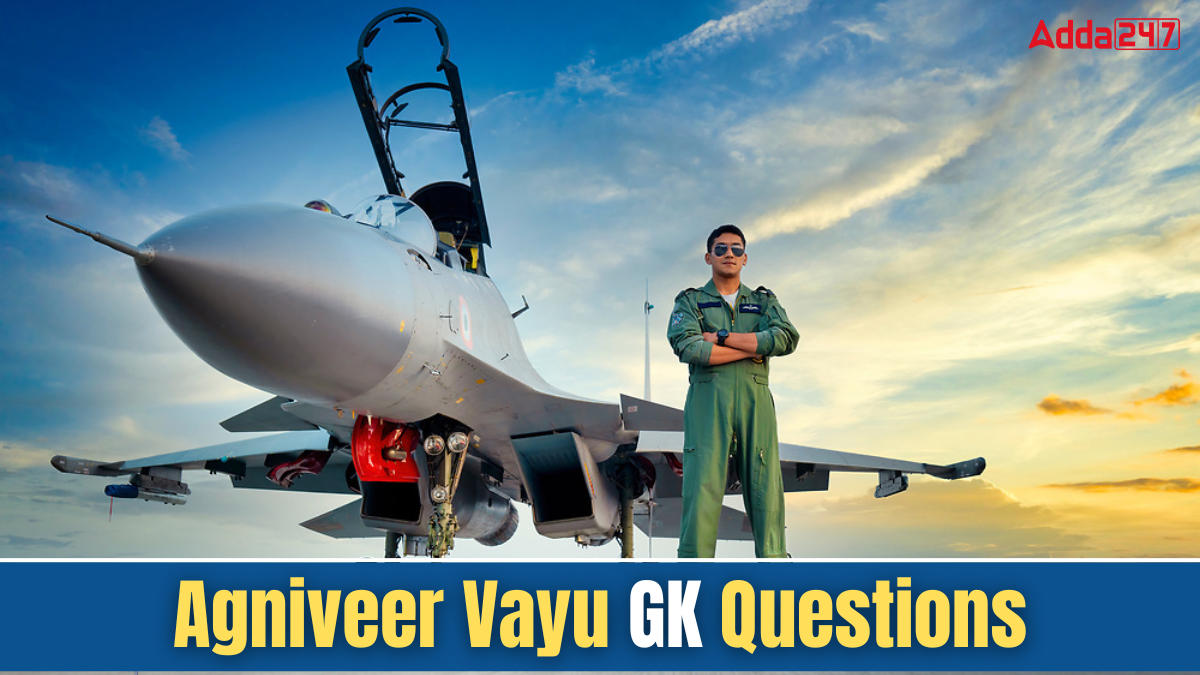


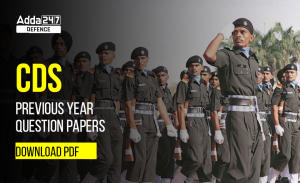 CDS Previous Year Question Papers, Downl...
CDS Previous Year Question Papers, Downl...
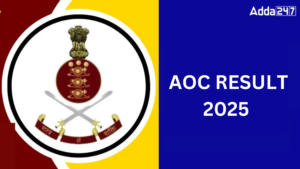 AOC Result 2025 Out, Download Link Activ...
AOC Result 2025 Out, Download Link Activ...
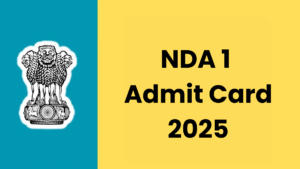 NDA 1 Admit Card 2025 Out, Download NDA ...
NDA 1 Admit Card 2025 Out, Download NDA ...

